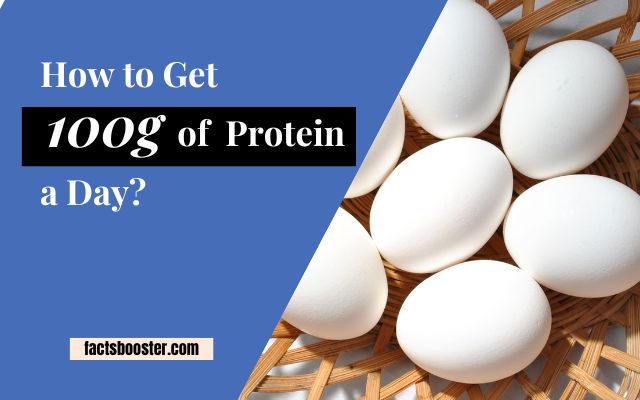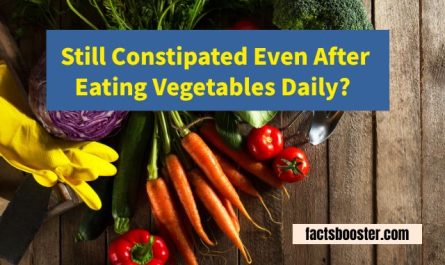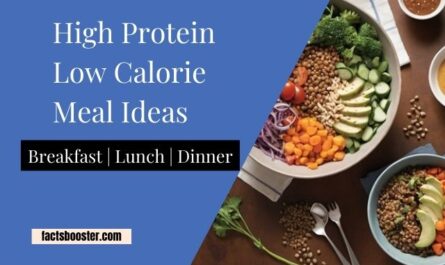Embarking on a journey to getting 100g of protein a day is more than a fitness milestone; it’s a testament to understanding the profound impact protein has on our bodies. Protein is the cornerstone of muscle building and repair, underlining every step of our physical progress.
Each bite and sip is an investment towards boosting our overall health and well-being. The quest for 100g is not just about numbers—it’s a balanced approach to nourish and fortify our bodies, ensuring we’re primed for any challenge ahead.
Key Takeaways:
- Protein plays a pivotal role in muscle building and repair.
- Meeting daily protein targets is crucial for our overall health.
- Aiming for 100g of protein daily supports a balanced and healthy lifestyle.
Calculating Your Protein Needs
Not all of us will need the same amount. Factors like our age, gender, and how active we are throughout the day play a crucial role. You might wonder how to take protein in a way that’s tailored to your personal needs, especially if aiming for 100g a day.
Let me guide you through calculating your precise needs – it’s not as challenging as you might think. Yet, it’s vital to remember the risks of over-consumption. Too much protein can strain our kidneys and liver. Balancing is key.
How to Get 100g of Protein a Day?
How to Get 100g of Protein a Day? The key here is variety; relying on a single protein source could lead you to miss out on essential nutrients.

Protein-Packed Breakfast Ideas
Starting your day on the right foot means nailing that protein intake early. Let me share some breakfast ideas that pack a serious protein punch, guiding you closer to your 100g goal.
For those who enjoy animal products, a classic choice is an omelet made with three eggs, mixed vegetables, and a slice of cheese, delivering about 30g of protein. On the vegetarian side, a smoothie blending one cup of Greek yogurt, a scoop of protein powder, and a handful of spinach can easily provide you with 40g of protein.
And for a quick fix that suits both dietary preferences, consider overnight oats mixed with a half-cup of almond milk, two tablespoons of peanut butter, and a tablespoon of chia seeds, rounding up to roughly 20g of protein.
High-Protein Lunch Options
Finding ways to take protein intake to the next level by lunch can feel like a chore, but it’s easier than you think. If you’re aiming to hit that 100g of protein a day, a hearty lunch is your secret weapon. For my meat-lovers, a chicken Caesar salad can easily pack in 30g of protein.
And don’t worry if you’re vegetarian; a quinoa and black bean salad tops up your protein tally by another 22g. Remember, it’s all about mixing and matching those high-protein foods to keep you on track.
Read more:
How to Get 100g of Protein a Day? Vegetarian’s Guide
Facing the task of hitting 100g of protein daily as a vegetarian can seem daunting at first. However, with the right approach, it’s not only achievable but can also be incredibly satisfying. Incorporating a blend of protein-rich plant foods is key.
Think lentils, chickpeas, and quinoa, which offer substantial protein amounts. Tofu and tempeh, versatile and packed with protein, should become staples in your diet. Don’t forget about nuts and seeds – they’re not just for snacking.
Adding hemp seeds or almonds to meals can significantly boost your protein intake. Variety isn’t just the spice of life; it’s also essential for meeting our protein goals.
Combining these different sources ensures we get all the essential amino acids our bodies need, entirely from plant-based sources.
Top 10 High Protein Foods
- Fish: A great source for lean protein, especially salmon and tuna, offering around 20-25g per 3-ounce serving.
- Eggs: One of the most complete protein sources, one large egg has about 6g of protein.
- Chicken Breast: Popular among athletes, a cooked breast provides about 31g of protein.
- Quinoa: A protein-packed grain, offering about 8g of protein per cooked cup.
- Lentils: These pack about 18g of protein per cooked cup, making them a powerhouse for vegetarians.
- Almonds: Not just a snack, but a protein source with about 6g per ounce.
- Greek Yogurt: Thick, creamy, and about 17g of protein per 6-ounce serving.
- Cottage Cheese: Low in fat and high in protein, with about 28g per cup.
- Tofu: A versatile vegetarian protein with about 10g per half-cup serving.
- Black Beans: Great for salads and soups, they provide about 15g of protein per cup when cooked.
Bottom Line
Throughout this journey, it’s clear how crucial protein is to our bodies, from muscle repair to overall health. We’ve explored how to smartly take protein and strategically get 100g of protein a day, blending it seamlessly into our diets through a variety of foods.
Let this guide be your roadmap to not just meeting but benefiting from your protein intake goals. Remember, each scoop, each bite, brings you closer to unlocking the full potential of your well-being. Stay motivated, knowing you’re fueling your body with the power of protein.
References:
1. Med J Aust, 2013 Aug 19, “Protein and vegetarian diets” (1)
2. PubMed Central, 2019 Nov, “Dietary Protein and Amino Acids in Vegetarian Diets—A Review” (2)
3. NIH, 2017 Dec 2, “Dietary Intake of High-Protein Foods and Other Major Foods in Meat-Eaters, Poultry-Eaters, Fish-Eaters, Vegetarians, and Vegans in UK Biobank” (3)


